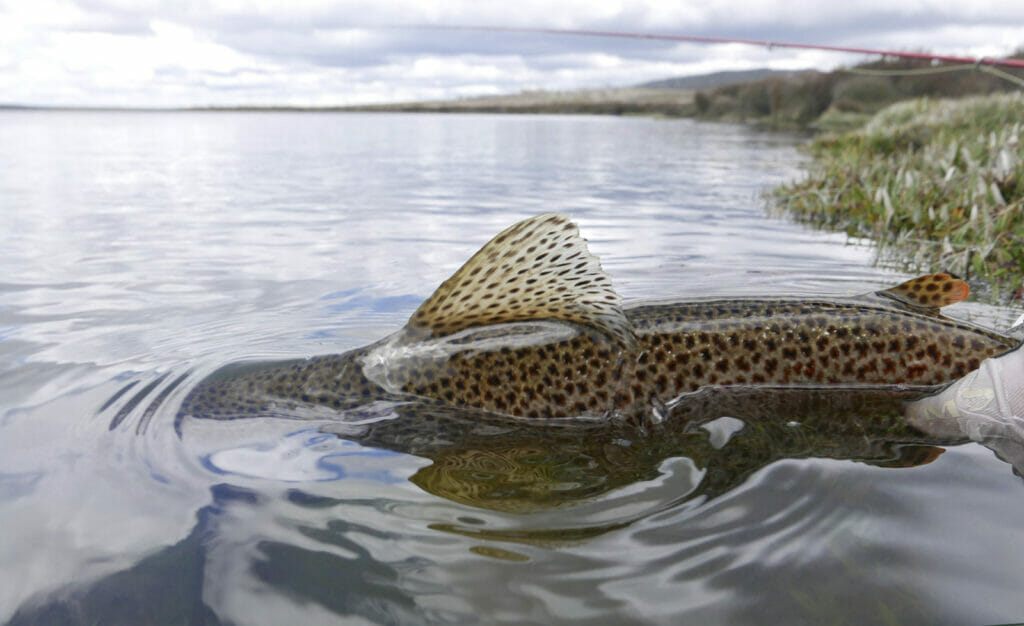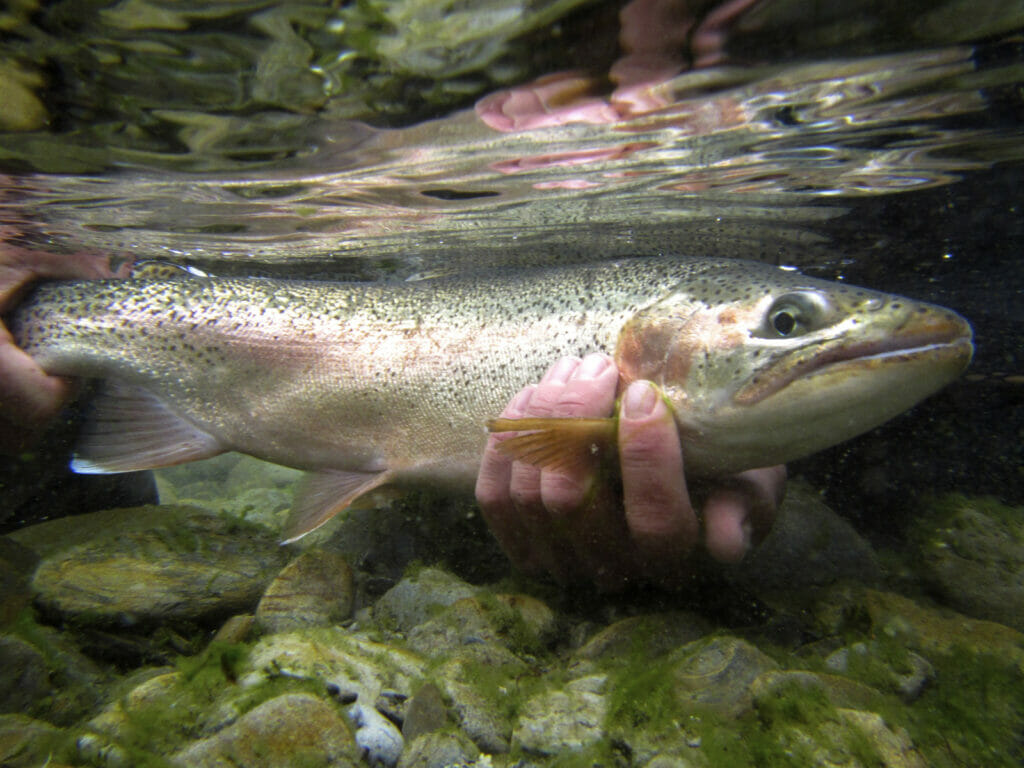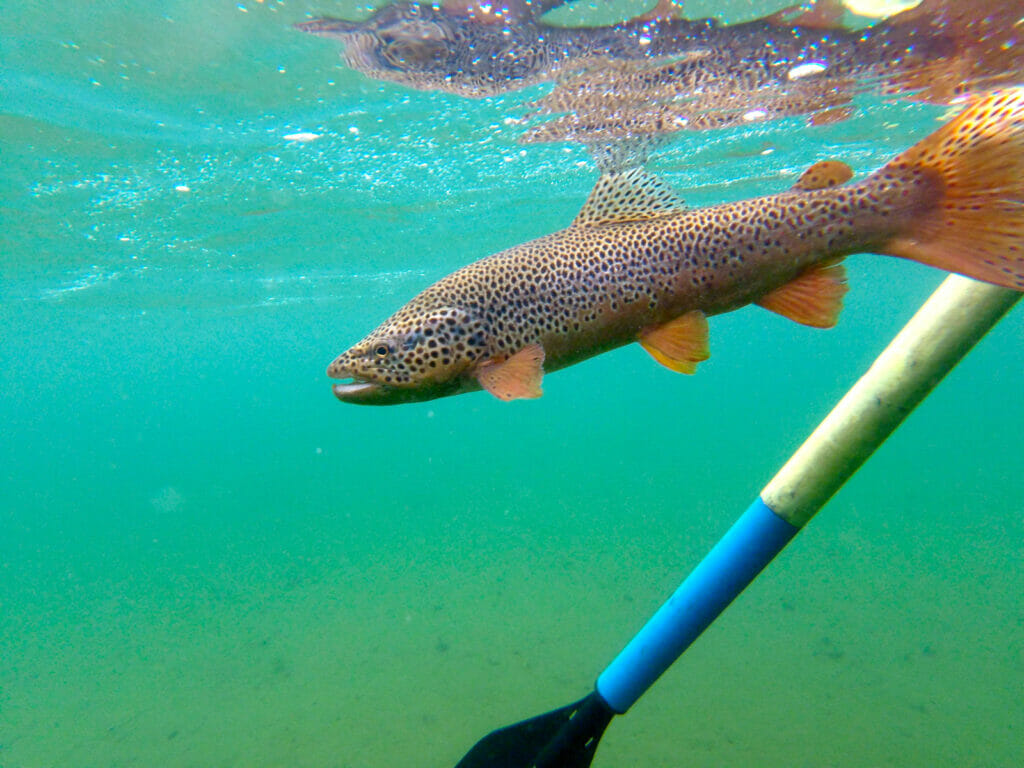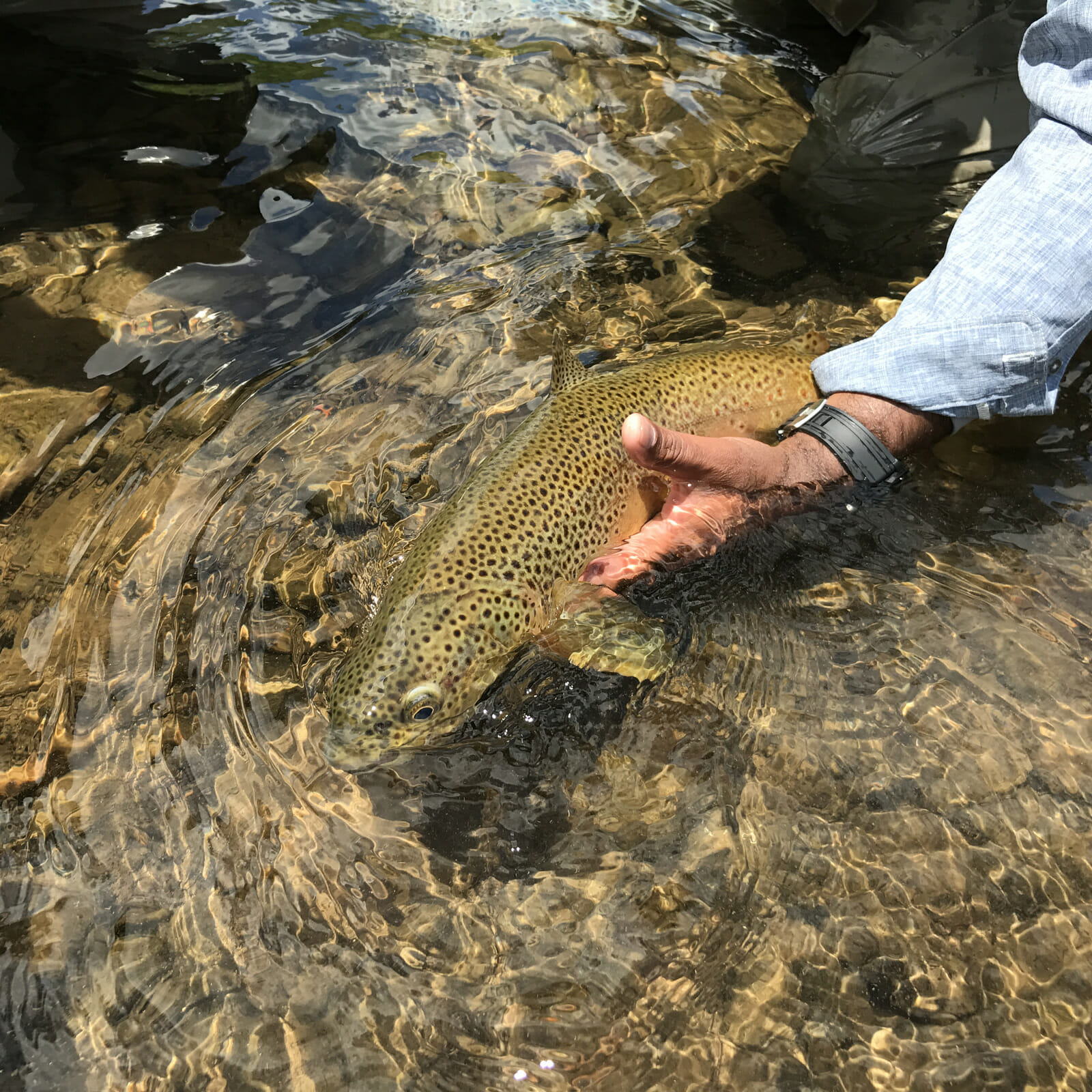I’ll spare you the bloody hand, gushing finger or torn scalp photos.
Because the truth is that, while gore might be a digital traffic magnet, there’s really no reason for any trout angler to suffer a puncture wound with a deeply embedded barbed hook. And if you do, I’m sorry, but that’s on you.
Rather, I’ll share a few photos of beautiful trout, caught, released and certainly left to swim on, because of barbless hooks.
Barbed hooks in any type of catch-and-release fly-fishing (for trout) are irrelevant relics, and if you learn how to fight and land fish, you’ll understand how completely worthless they really are.

I have lost hundreds, if not thousands, of trout while fighting them on a fly rod, yet never, ever have I thought, “Jeez, if my hook had a barb, I probably would have landed that one.” There are over a thousand reasons why a trout might shake off after you hook it, and if you’re able to maintain any level of line pressure and tension, the lack of a barb on the hook is not one of them.
Now, let’s get this out of the way before the nastygrams pour in. If you intend to keep the fish, and it’s well within the rules and regulations… fine. Button them on as tightly as you can, land them, kill them as quickly and ethically as you can, and then go eat them.
But if you’re playing catch-and-release with a barbed hook—it doesn’t matter if it’s a size #20 parachute Adams—you might as well be throwing a Panther Martin, and you should climb off your high horse, stop criticizing the gear anglers and meat fishers and get real.
Your fishing dog will also thank you for going barbless. I have learned that a Pudelpointer is basically a four-legged fly patch. Mine is still learning and doing her best, but she sometimes cannot help herself on the drift boat, or swimming through a run, and I can tell you, pinching down barbed hooks is step number one in fostering a healthy rapport with any dog that fishes with you.
Your compadres and fishing companions will thank you, too. People get stuck all the time. No barb, no problem. All that’s left is often no more than the teeny blood spot like the puncture after a flu shot.

That step-by-step instruction about how to wrap line around the shank of the barbed hook and yank it out? Yeah… it works, but it still hurts like hell.
You’ll thank yourself. Because even if you don’t snag your skull with a sloppy backcast with a size #6 sculpin, you’re more likely to snag that $200 hoody or the fancy sun shirt you just bought. Pinched barbs keep your clothes intact.
The fish themselves will thank you. Because the sooner you release a fish after the fight, the better off the fish will be, and the greater the odds that it will survive. It isn’t rocket science to understand that a fish caught clean and quickly, and subsequently released, has a much greater chance of survival than one that’s landed, fiddled around with, air-exposed, photographed, and let go after that ordeal. Do check out keepfishwet.org for guidance on best practices for catch-and-release.

Lastly, other anglers will thank you. Because, at least to me, there is nothing more disheartening than to watch a majestic trout eat… play the fish… and land it, only to see its whopper-jawed, torn up face knowing that fish is probably doomed because of the sloppy handling and disregard of someone who caught it before and disrespectfully dumped it back into the river to fend for itself, maybe even thinking they had a clean catch-and-release conscience.
I always cheer for the fish. Yeah, I want to catch ‘em as much as anyone else.
But give them a chance. And “brain pin” barbed hooks have absolutely no place in ethical catch-and-release angling. Many fly patterns now come barbless, with reason. And if not, it takes two seconds with a pair of pliers or hemostats to do the right thing and crush that barb into obsolescence.
So do it.



